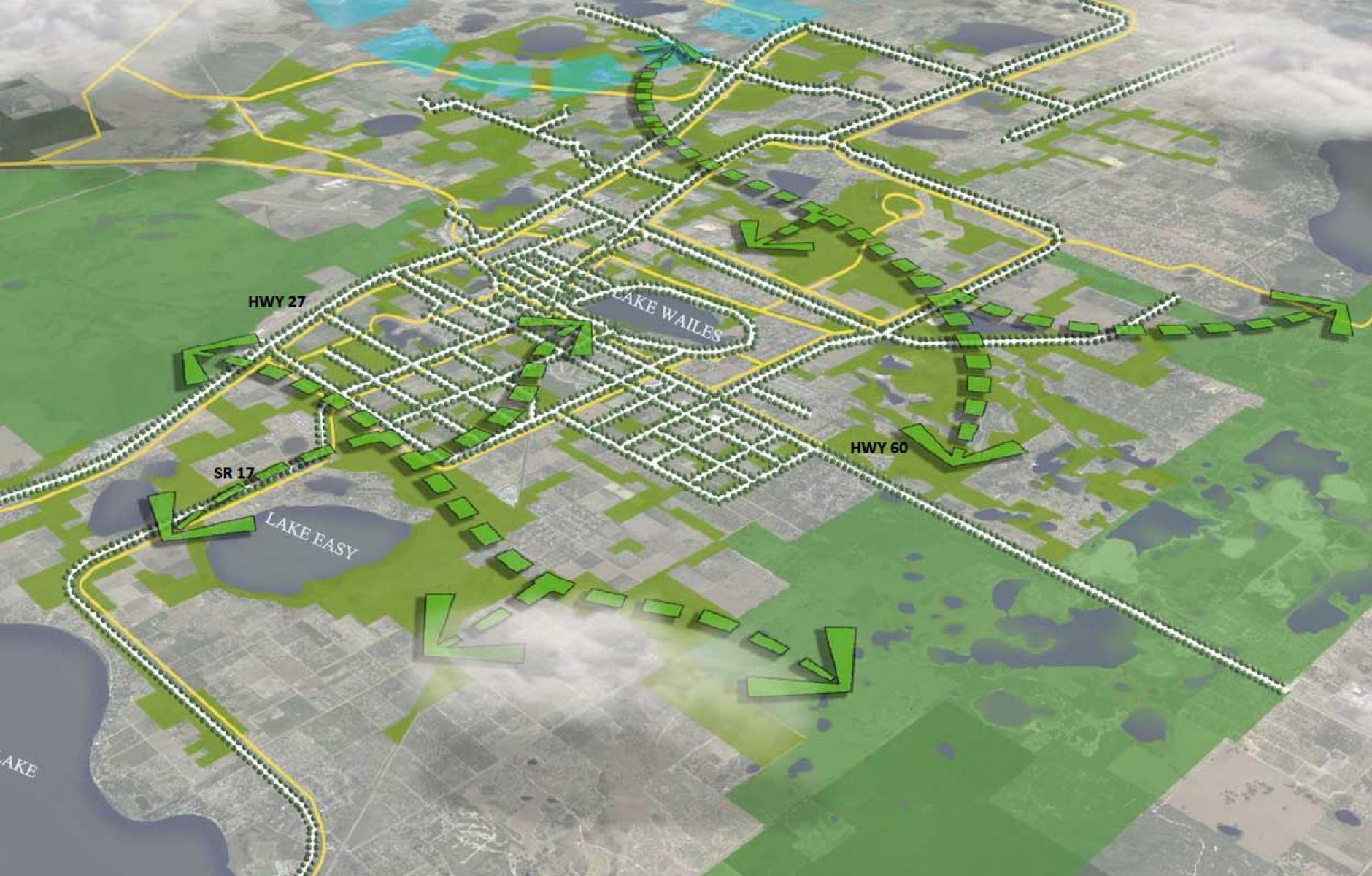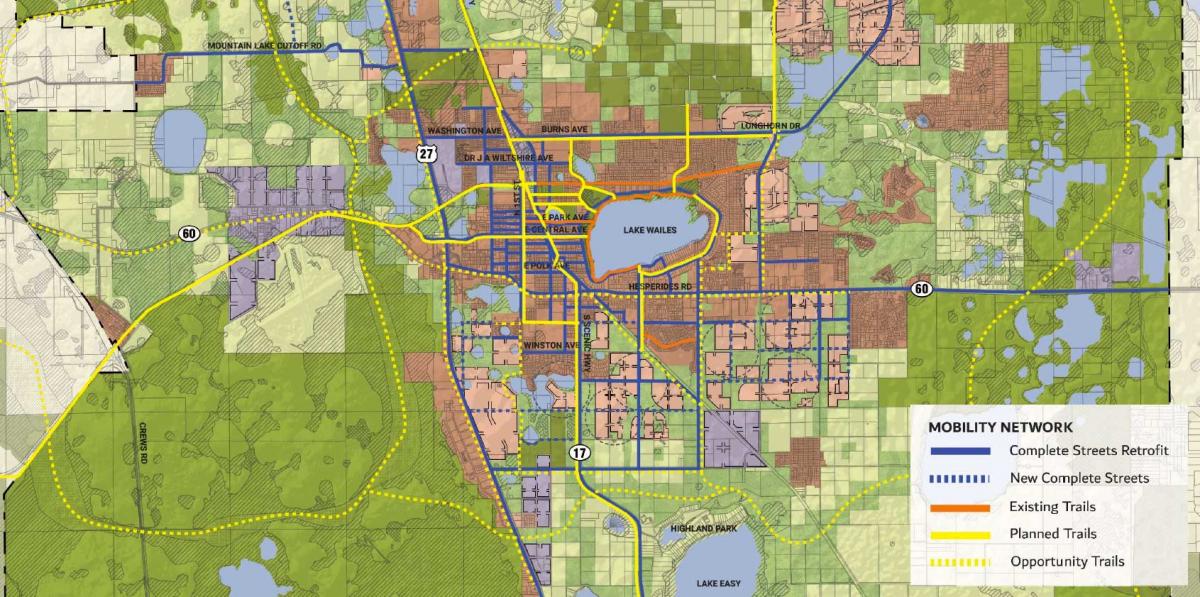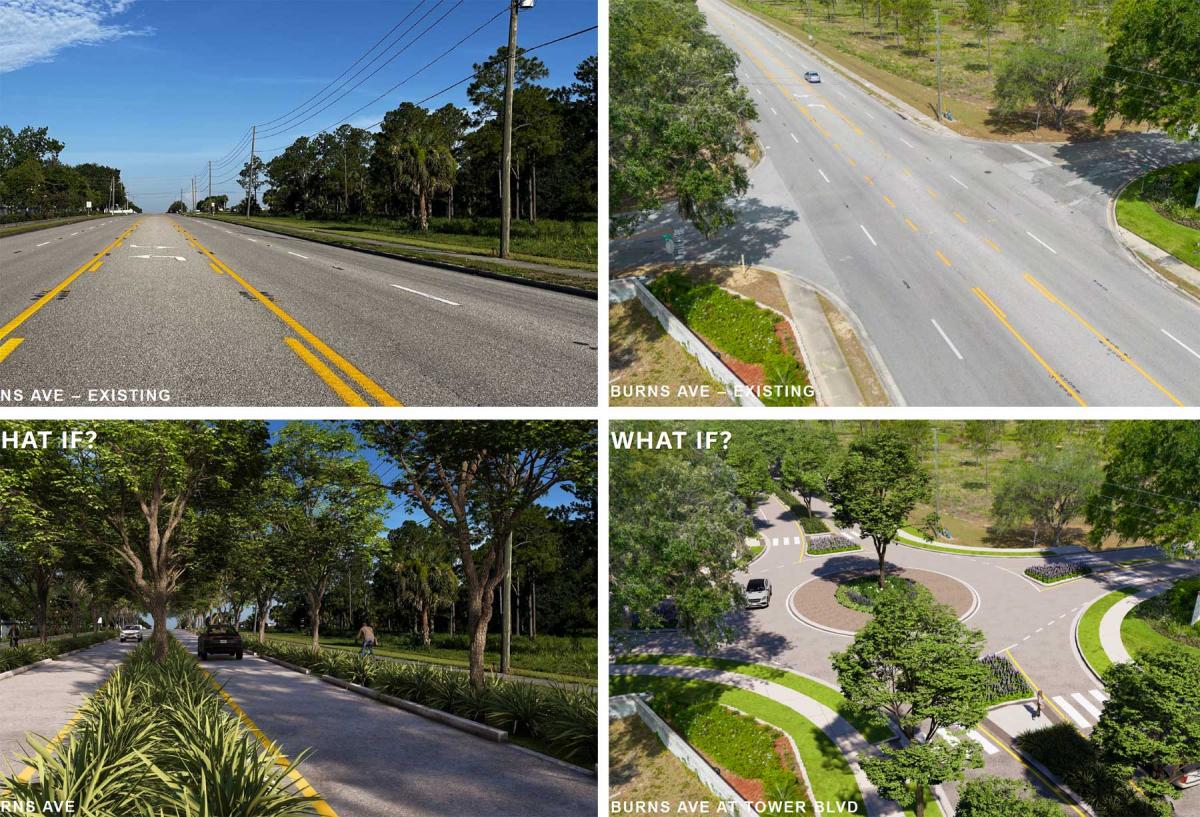
Planning a city that gets people moving
“Physical activity is a natural part of the daily living for humans,” notes John Simmerman, founder of Active Towns. “But so is being sedentary. One of the big challenges in our current realm is that much of our environment is designed around using the automobile and taking the easy way. Part of what we are trying to do in communities … is making the active choice an easy choice.”
Simmerman was part of an On the Park Bench panel this week on Planning for Physical Activity. The panel focused on Lake Wales Envisioned, a recently adopted Lake Wales, Florida plan that encourages active living.
The plan does this by creating a built environment that promotes mobility through walking, cycling, e-biking, or other means of transportation beside automobiles. One way to do that is through proximity—to a park, multiuse pathway, protective bike lane, or walkable destination. Another is to ensure that the environment is pleasant for walking or using a bicycle. Simmerman asks: “How comfortable is it to walk out your door and get to meaningful destinations?”

Amy Groves, project director for lead planner Dover, Kohl & Partners, described the plan and the “Lake Wales Way.” The plan focuses on revitalizing, and building new, walkable neighborhoods. The firm is helping the city to adopt a traditional neighborhood development ordinance that would replace conventional codes. Also, the plan identifies a Big Green Network of open space preservation in corridors surrounding the city, connected by trails to downtown.
Wade Walker, transportation engineer with Kittelson & Associates, explained the approach to streets and trails. The city is working on retrofitting automobile-oriented streets, including thoroughfares due for resurfacing. Burns Avenue, which provides access to the landscape treasure Bok Tower Gardens, is oversized at five wide lanes and only 8,000 cars daily. The team showed how Burns Avenue could be reduced to two lanes with roundabouts at important intersections, including the entrance to the gardens.

The Florida DOT now allows street retrofits to enable more mobility choices when streets are resurfaced. Luckily, three state highways through the town are due for resurfacing, Walker says. Also, the plan included many more trails that will link new villages and neighborhoods to downtown. These trails are especially useful with the growing popularity of e-bike and other micro-vehicles.
Watch the entire webinar.




